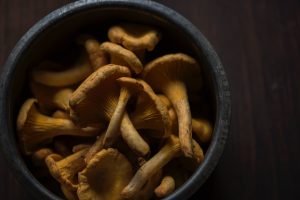Seasonal Affective Disorder
Seasonal affective disorder or SAD is a recurrent depressive disorder with a seasonal pattern usually beginning when the nights draw in, continuing throughout winter.
More usual in winter it can also be present in spring and early summer. Symptoms are commonly known as low energy and mood. Depending upon severity and history of mental illness typical treatment includes medication (recommended via GP), light therapy, vitamin D, and counselling. People with seasonal affective disorder have difficulty regulating the neurotransmitter serotonin, our ‘happy’ neurotransmitter, believed to be responsible for balancing mood. There also may be an issue with overproduction of melatonin – the hormone that gets us ready for sleep. With less outdoor exposure to sunlight, people with SAD may also produce less vitamin D. Vitamin D is even more important as it is believed to play a role in our serotonin activity. A review of studies containing 31,424 participants showed that low levels of vitamin D can be associated with depression. This highlights the need for more controlled trails for looking into vitamin D for the prevention and theraputic treatment of depression and SAD. Always visit your GP if you feel like you might be suffering as the nights draw in and consider all the options in relation to the severity of symptoms.
Therapeutic Approaches
As a decrease in daylight can trigger SAD, for some approaches to aid symptoms are centred around replacing the lack of sunshine using light therapy (Bright Light therapy (BLT) or phototherapy) in the morning. Light therapy should not be used in conjunction with medications such as lithium, melatonin, phenothiazine antipsychotics, and certain antibiotics. Therapeutic solutions such as CBT have also been shown to help. All solutions that aim to tackle SAD symptoms are unique to each individual – there is no one size fits all approach so make sure you are getting the right advice from the right people.
More on Vitamin D
Low levels of Vitamin D can be due to insufficient dietary intake or lifestyle issues such as little exposure to sunshine. Children from the age of 1 year and adults need 10 micrograms of vitamin D a day. This includes pregnant and breastfeeding women, and people at risk of vitamin D deficiency. Supplementation can be considered for people who think they may not be getting enough vitamin D from their diet during the winter months. Adverse reactions or intoxication are rare but could occur from doses of more than 50,000 IU per day.
Foods that provide vitamin D include: fatty fish, like tuna, mackerel, and salmon, beef liver, cheese, egg yolks, mushrooms and foods fortified with vitamin D, like some dairy products, orange juice, plant milks and cereals. Most vitamin D sources do tend to come from animal sources, so vegetarians and vegans should think about their vitamin D intake. The best non-animal source are mushrooms and luckily, they are a great versatile vegetable to buy every week. Mushrooms also contain a good source antioxidants (especially selenium) that help protect the body from damaging free radicals. They also help to boost your immune system – win, win!
Not only can you add them in so many meals to up the nutrition content they are a good standalone ingredient. Mushrooms on toast for breakfast or lunch and dinner options include mushroom risotto or stroganoff. There are so many recipes on line, I recently have been experimenting with mushroom stroganoff which couldn’t be easier.

Here is a little stroganoff inspiration. Fry and onion and then add in about 500g of mushrooms (whatever variety you like), add in tarragon and cook for a few minutes. Add in crème fraiche (oatly do a vegan version), add a bit of Dijon mustard, salt and pepper serve with brown rice or tagliatelli. I think aubergine would also be a good addition to this – but it wouldn’t be as quick as you would have to cook the aubergine down for a lot longer than mushrooms.